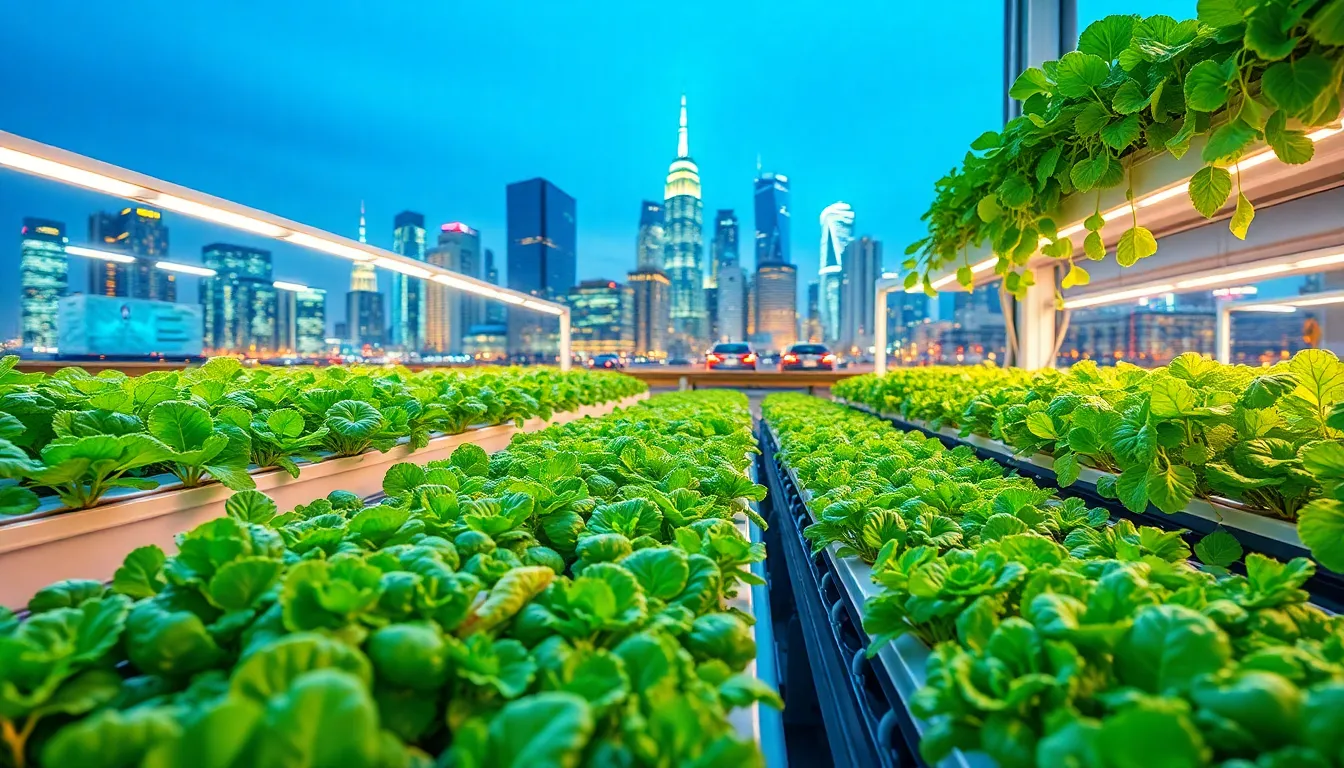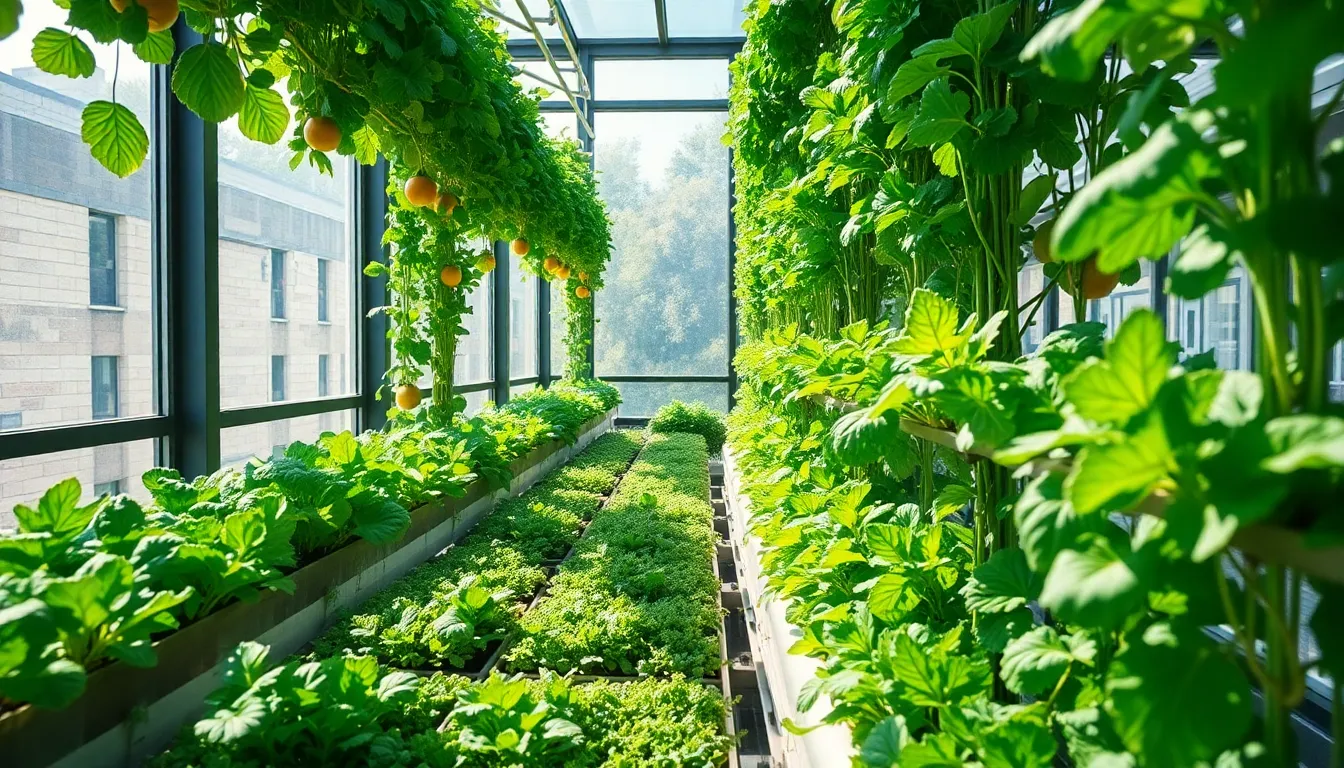In a world where food waste piles up faster than a toddler’s tantrum, sustainable food technology swoops in like a superhero wearing an apron. It’s not just about saving the planet; it’s about transforming how we eat and grow our food. Imagine a future where your dinner is not only delicious but also eco-friendly, like a salad that gives back to Mother Earth instead of draining her resources.
Sustainable food technology is revolutionizing the way we produce, process, and consume food. From lab-grown meats to vertical farms sprouting in urban jungles, this innovation is turning the culinary world upside down. So grab a fork and get ready to dig into the deliciously green future of food—where every bite can help save the planet and keep your conscience as clean as your plate.
Table of Contents
ToggleWhat Is Sustainable Food Technology?
Sustainable food technology encompasses innovative practices aimed at making food production, processing, and consumption environmentally friendly. It includes methods that reduce carbon footprints, conserve resources, and minimize waste throughout the food supply chain.
Examples of sustainable food technology include lab-grown meats, which require fewer resources compared to traditional livestock farming. Vertical farms also exemplify this approach, allowing for year-round crop production in urban areas while using 90% less water than conventional farming. These technologies not only address food security but also enhance local economies by reducing transportation emissions.
Food waste reduction technologies play a crucial role as well. Various methods, such as advanced food preservation and smart packaging, extend the shelf life of perishable items. Additionally, composting technologies convert organic waste into valuable fertilizers, further contributing to a circular economy in food production.
Education and consumer awareness also serve as vital components of sustainable food technology. Understanding the benefits of eco-friendly practices helps consumers make informed choices, ultimately influencing market trends. As awareness grows, it drives demand for products that align with sustainable practices, encouraging producers to adopt greener methods.
These advancements reflect a broader movement towards sustainability, aiming to create a food system that supports health, economy, and the environment. Stakeholders across the food industry, from farmers to consumers, have the opportunity to participate actively in this shift. As sustainable food technology continues to evolve, it promises a transformative impact on future food landscapes.
Benefits of Sustainable Food Technology


Sustainable food technology offers numerous advantages that support health, economy, and environmental sustainability. These benefits include positive environmental impacts and significant economic advantages.
Environmental Impact
Sustainable food technology significantly reduces carbon footprints associated with traditional food production. Innovations like lab-grown meats require fewer resources, resulting in decreased greenhouse gas emissions. Vertical farms optimize land use, enabling urban agriculture and reducing transportation emissions by delivering fresh produce closer to consumers. Furthermore, smart packaging prolongs the freshness of perishables, minimizing waste. Overall, these advancements contribute to conserving resources and promoting biodiversity, making the food system more resilient to climate change.
Economic Advantages
Sustainable food technology bolsters local economies by creating jobs in innovative sectors. Producing food through vertical farms and lab-grown methods often operates on a smaller scale, generating employment opportunities in urban areas. Reduced transportation costs from localized food production further enhances economic benefits. Additionally, implementing food waste reduction technologies can lead to cost savings for businesses by lowering disposal fees and maximizing resource use. Consumers increasingly favor sustainable products, driving market demand and encouraging investment in green technologies. This shift supports economic growth while fostering sustainable practices.
Key Innovations in Sustainable Food Technology
Innovations in sustainable food technology play a crucial role in transforming food systems globally. These advancements aim to optimize resource use while minimizing environmental impact.
Alternative Proteins
Alternative proteins significantly contribute to sustainability. These include lab-grown meats, plant-based proteins, and insect proteins, which offer lower resource consumption compared to conventional livestock farming. For example, lab-grown meats produce 90% fewer greenhouse gas emissions than traditional beef production. Plant-based options reduce water usage and land requirements, promoting sustainable diets. Insect farming presents another eco-friendly alternative, yielding high protein with minimal environmental costs. Consumer acceptance of alternative proteins is increasing, driving innovation and accessibility in this sector.
Vertical Farming
Vertical farming represents a groundbreaking approach to urban agriculture. These systems stack crops in controlled environments, allowing year-round production in urban areas and reducing the need for extensive farmland. They consume 90% less water than traditional farming methods and eliminate the need for pesticides. By bringing food closer to urban populations, vertical farms lower transportation emissions and ensure fresher produce. This method also integrates advanced technologies, such as LED lighting and climate control, maximizing crop yields while minimizing environmental footprints.
Hydroponics and Aquaponics
Hydroponics and aquaponics offer cutting-edge solutions for efficient food production. Hydroponics involves growing plants in nutrient-rich water, using no soil, which significantly reduces water consumption. This method maximizes space efficiency and enables cultivation in urban environments. Aquaponics combines fish farming with hydroponics, creating a symbiotic system where fish waste provides nutrients for plants. This system lowers water usage by over 90% compared to traditional agriculture. Both techniques enhance food security by allowing year-round production and reducing dependency on seasonal crops.
Challenges Facing Sustainable Food Technology
Sustainable food technology faces several challenges that must be addressed to achieve widespread adoption.
Technological Barriers
Development timelines for innovative solutions often extend longer than anticipated. Many sustainable technologies require significant investment in research and development, which can hinder progress. Integration of new systems into existing infrastructures presents additional difficulties. Established agricultural practices, while effective, resist change due to a lack of incentives for farmers to adopt newer methods. A skills gap exists as well, with limited expertise available in advanced technologies such as aquaponics and vertical farming. These barriers restrict rapid implementation and limit efficiency, slowing down the transition towards sustainable practices.
Consumer Acceptance
Consumer perceptions play a vital role in the adoption of sustainable food technologies. Familiarity with lab-grown meats and insect-based proteins remains low among many consumers. Misunderstandings about the safety and nutritional value of alternative proteins create hesitation when making purchasing decisions. Cultural attitudes towards food influence acceptance; traditional dietary patterns may conflict with new innovations. Education and marketing strategies can help bridge this gap, fostering consumer trust and openness to sustainable options. Proactive engagement with consumers can promote awareness initiatives aimed at highlighting the benefits of sustainable practices in food consumption.
Future Trends in Sustainable Food Technology
Emerging trends in sustainable food technology shape the future of food production and consumption. Innovations in alternative proteins, such as lab-grown meats, continue to gain traction, appealing to environmentally conscious consumers. Significant reductions in resource consumption and greenhouse gas emissions highlight these alternatives’ environmental benefits.
Vertical farming techniques expand the potential for urban agriculture. By utilizing controlled environments, these farms produce crops year-round while conserving up to 90% of water. Furthermore, advancements in hydroponics and aquaponics streamline food production by maximizing space and minimizing resource use.
Smart packaging technologies enhance the shelf life of produce and reduce food waste. Consumers increasingly receive notifications about product freshness, allowing them to make informed decisions. Also, preservation methods, like cold chain technologies, contribute to longer-lasting foods, reinforcing the circular economy.
Education plays a vital role in driving these trends. With greater awareness, individuals become more open to sustainable products. Initiatives that showcase the safety and benefits of lab-grown meats and insect proteins can foster consumer acceptance and expand food choices.
Sustainable food technology attracts investments in research and development. Financial support encourages innovation, facilitating breakthroughs in production techniques and processes. As startups and established companies collaborate, they push the boundaries of sustainable agriculture.
Global challenges, including climate change and resource scarcity, necessitate these advancements. By prioritizing sustainable practices, the food industry can address these pressing issues, ensuring food security for future generations. Continuous development in food technology fosters resilience while supporting economic growth, contributing to a sustainable food ecosystem.






